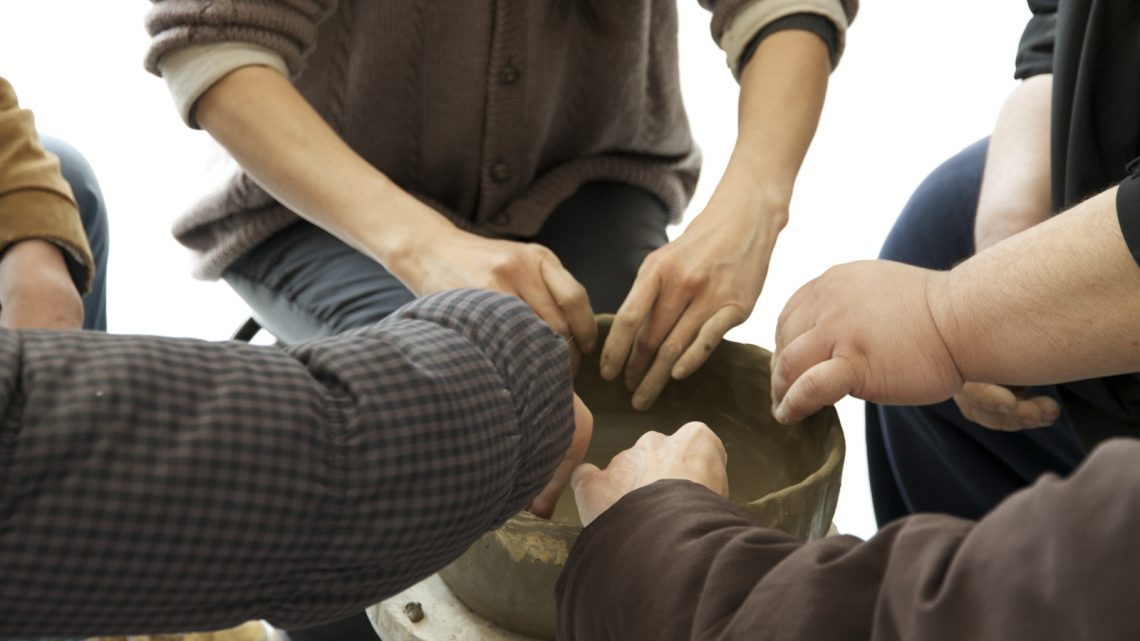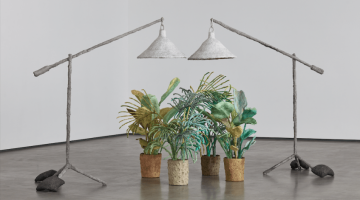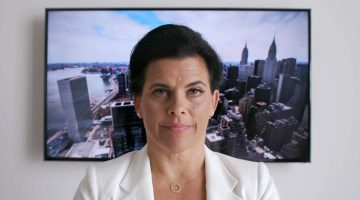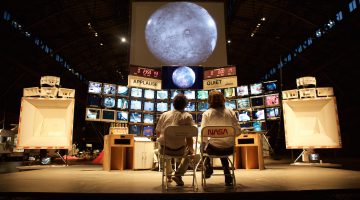Koki Tanaka: Potters and Poets
Asian Art Museum
200 Larkin St., San Francisco, CA 94102
November 4, 2016 – February 14, 2017
Koki Tanaka: Potters and Poets, seems to be stuck in the corner on the second floor of the Asian Art Museum in San Francisco. Or maybe it’s The Sculptural Turn: Contemporary Japanese Ceramics from the Kempner and Stein Collection in the adjacent rooms that makes Tanaka’s work feel simultaneously awkward and welcoming. Most of the floor is devoted to 14 Japanese clay artists, masters and also up and coming artists, expanding on a generation of artists born after World War II who moved away from century-long traditions of vases and tea ware, drawing inspiration from literature, anthropology, archeology, for their beautiful stoneware and porcelain.
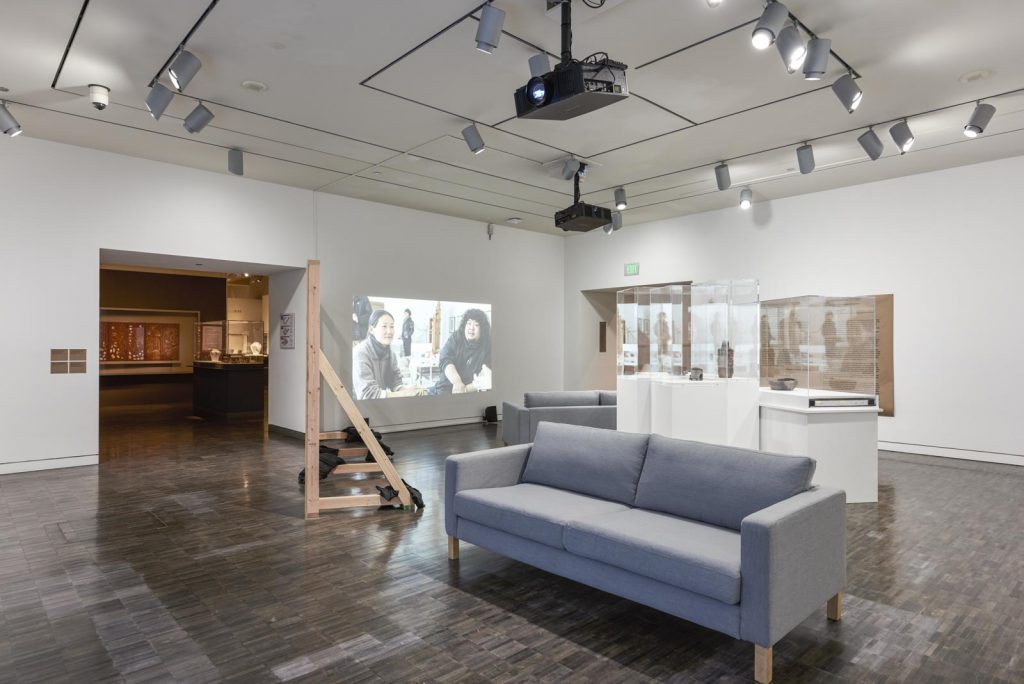
Koki Tanaka: Potters and Poets, Asian Art Museum, November 4, 2016 – February 14, 2017. Photo © Asian Art Museum
Curated by by Karin Oen, Assistant Curator of Contemporary Art, Tanaka’s exhibition consists of two works whose videos are projected in wall size in front of grey couches. Two silver push-pins hold up the wall text for A Pottery Produced by 5 Potters at Once (Silent Attempt) (2013) that drops and curls towards the wall on brown paper. Pots on plinths are encased in plexi and clustered together at varying heights. A Poem Written by 5 Poets at Once (First Attempt) (2013), screens too but slightly louder. Big square poems lean against the wall. The wooden scaffolding doubles as a room divider and receptacle for another wall text. Like one of the couches, it’s at a diagonal. This setup is intentionally chaotic, but warmhearted. I can’t figure out why the ceramics are encased—a change since I saw them in 2013 on plinths of tree trunks—which seems to simulate the neighboring exhibit too much. I find myself wanting to walk around them, but re-situating the work depending on the installation location is important to Tanaka’s practice. Here he has purposely left one of the pedestals unfinished.
Born in Tochigi, Japan, Tanaka showed these videos amongst other works in abstract speaking—sharing uncertainty and collective acts at the Japan Pavilion in the 55th Venice Biennale in 2013. I couldn’t help interpreting the chipped wooden scaffold as a continuity of the questioning of the practical efficacy of art and architecture faced with disaster. The Pavilion centered on the aftermath of the Tohoku tsunami and earthquake and the Fukushima Daiichi nuclear accident of March 11, 2011. Tanaka was in LA, not directly affected by the earthquake. Without experiencing it in person, how could he express the impact it had? The exhibition was built up on dealing with this distance felt—over timber, and wall-text leftovers from the Venice Architectural Biennale of 2012, curated by Toyo Ito. Tanaka included it because Ito’s show was based on a communal house he built with 3 architects in a town wiped out by a tsunami, where the locals helped build the house. Furthering this, Tanaka showed, among other works, Precarious Tasks (2012-present)—documentation of events Tanaka organized in Japan, with up to 60 participants enacting routine and emergency situations: ‘going up to a city building taller than 16.7 m’, ’24 hours gathering’, ’talking about your name while eating emergency food.’ These gave a lively sense of hope to establish necessary conversations and recognize the difficulty of re-building post-disaster. These attempts to explore how to share an experience through collective activities continue—Precarious Tasks #15: Exchange of Our Clothes and Books as Exchanging our Bodies and Thoughts (Reconfiguration) was part of his 2016 exhibit at the Showroom in London. Each composition is bound to be unique. These scenarios seem to provide freedom, and flexibility—a sincere entry point.
In the two works at the Asian Art Museum we observe what happens in the process of mutual cooperation. Tanaka has made several works along these lines. He selects collaborators, sometimes with the same vocations but different backgrounds, and assigns them a particular task to accomplish. We watch the result of their negotiations as he leaves it up to them to work together. Six years ago at Koki Tanaka’s first US solo exhibition held at Yerba Buena Center for the Arts, one saw not only A Haircut by 9 Hairdressers at Once (second attempt) (2010) but also drawings, maze-like plywood, and video works involving haphazard actions.
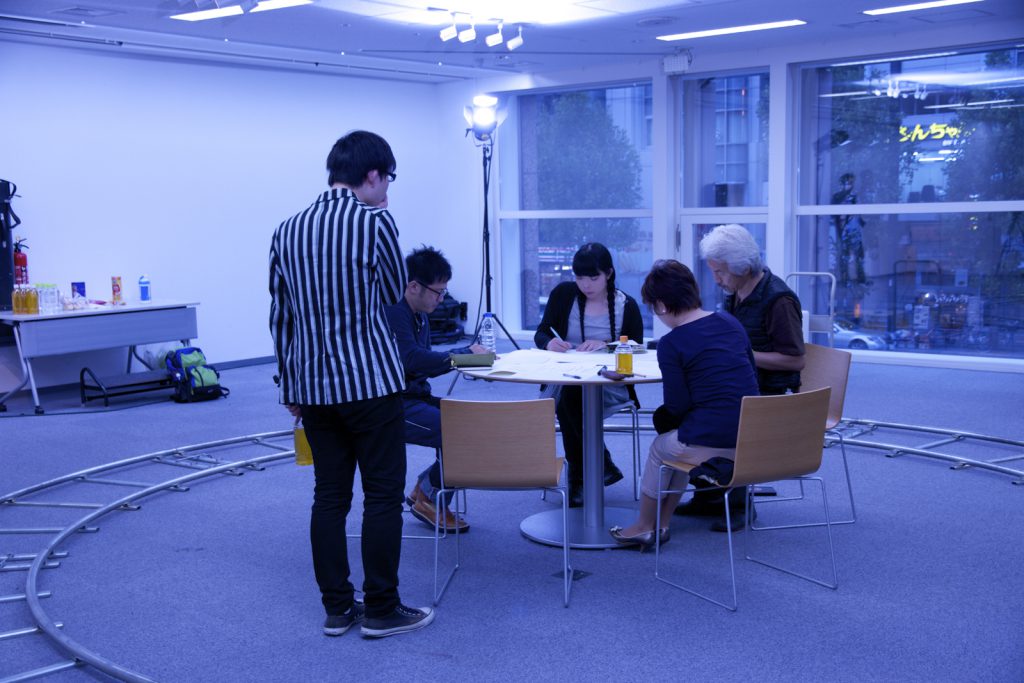
Koki Tanaka (Japanese, b. 1975), A Poem Written by 5 Poets at Once (First Attempt), 2013. Collaboration, Video Documentation. Courtesy of the artist. © Koki Tanaka.
At the Japan Foundation headquarters in Tokyo, where the 5 poets… video was shot, the poets—focused, almost excessively polite—reserve confrontational feelings, listen to each other, and carefully discuss a series of options before progressing in their poems. They talk about the difficulty of sharing, of losing something that’s difficult to share, and the meaning of sharing. They take on the task with a certain gravity and appear kind-hearted, almost too well-intentioned. A certain curiosity towards their collaborators and care develops. Any attempts to dominate others within the group operates demurely, if at all. They seem sincere in their enjoyment of what they are doing rather than question it.. They focus on selecting methods, feeling passages that are “more honest,” creating rules—whether to erase or not—whether to use what is crossed out as the chosen passages. “It’s up to you,” someone says. When it is dark, they write the final poem in a radial pattern, walk slowly around the circular table, recite. Then, again, in the opposite direction. They show us all is possible with patience.
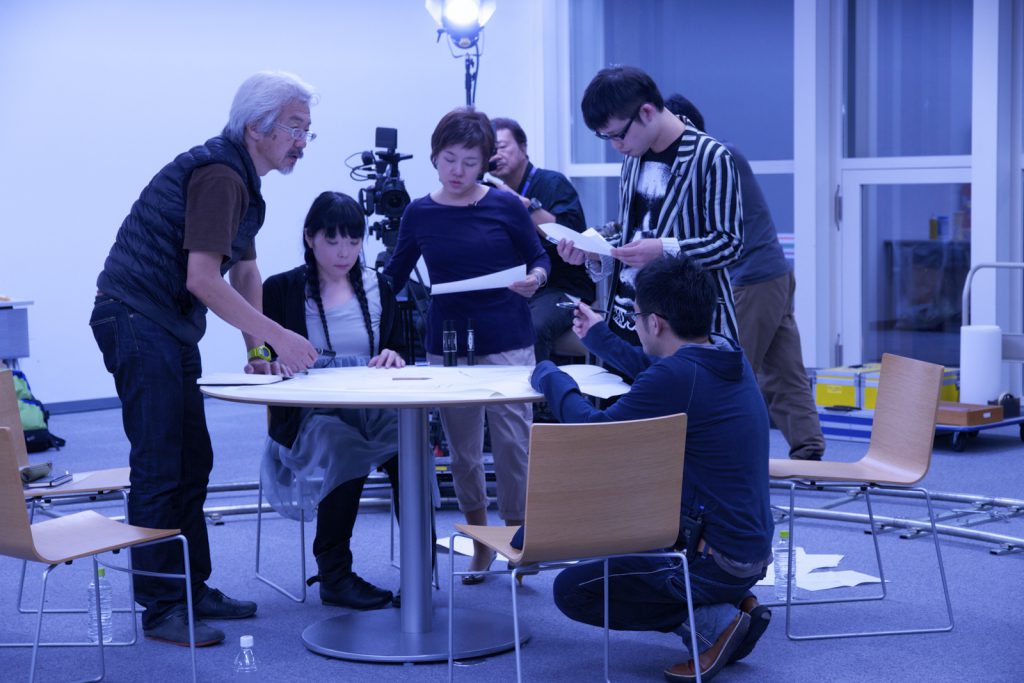
Koki Tanaka (Japanese, b. 1975), A Poem Written by 5 Poets at Once (First Attempt), 2013. Collaboration, Video Documentation. Courtesy of the artist. © Koki Tanaka.
Despite formal similarities, A Pottery Produced by 5 Potters at Once (Silent Attempt) is markedly different. The tension of working with others is made explicit. “Harmony is painful”—“there is no group”—“there are no selves”— “If we were five kids in kindergarten would we make anything different?” They ask questions, talk about effort, criterion for success, the pleasure of choosing together versus following ones own desires. One of the potter’s ambivalence presents a subversive foray into the conditions of making. He is glad when they agree they will destroy one of the works they made and restart. As they complete another he says “…even if it’s perfect it can still be depressing…” or “…For some people it’s just making stuff, quality doesn’t matter…” Finishing the works brings difficulty. Antagonized, the work seems unrecognizable as his own, or as anyone’s in the group—others reassure him the pots are a memory of the experience. The tensions raised open necessary and poignant questions. These are embedded across Tanaka’s larger oeuvre, implicit in the ensuing politics of art and of collaboration writ large.
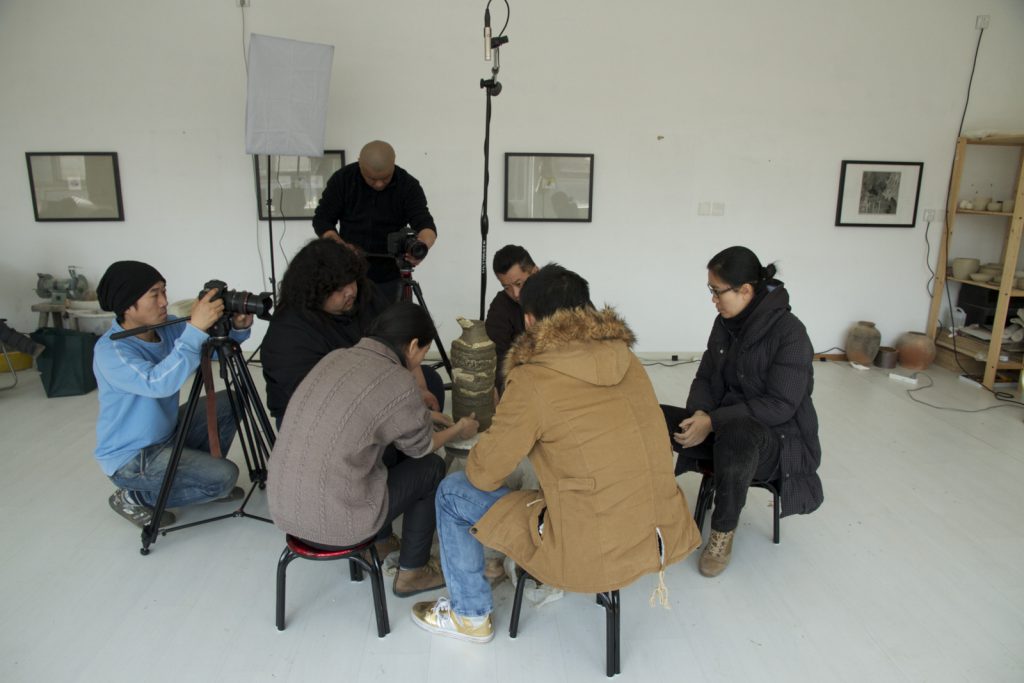
Koki Tanaka (Japanese, b. 1975), A Pottery Produced by 5 Potters at Once (Silent Attempt), 2013. Collaboration, Video Documentation. Courtesy of the artist. © Koki Tanaka.
Tanaka entrusts much of the process to his film crew and the participants. The frame and the premise of these projects is simple; the structure attempts to parcel out what it means to work together. It is the length of these films and their rhythm that asks the viewer to wait to return to life, as life too waits for art. But something of Tanaka’s work is communicated even if viewers do not stay for the entirety.
Within the tasks is the aspiration to recreate various aspects of nature, whereby a creation must emerge from a kind of chaos—the collaborators are enlisted for this task—using reality itself as the material for construction. Each decision of the participant unfolds as a commentary on the decision making of the artist, loaded with the idea that each choice is a political one, to be interpreted according to its aesthetic consequences. Tanaka acknowledges this type of discourse as he subsequently discards it—instead deploying a plan for conquering the material of what it means to live and work together, by embracing subtle aspects of discovering and living. The humanizing of the subjects and the staging of group dynamics constitutes the video’s strength.
Tanaka’s ability to understand human behavior, ethics, and interaction is secondary to his ability to organize it according to the task at hand—the task he assigns the collaborators, the responsibility given to a collective. If the films themselves become long, too uncomfortable to watch, perhaps it is because he offers a confrontational lexicon—leaving questions such as, ‘have they seen each other since this encounter?’ Is a random group meeting for one day a community? Why did he choose them? How well does he know them? While he has worked with some of his film crew for many years, these projects and the relations to his participants—however symbolic or influential—are ephemeral.
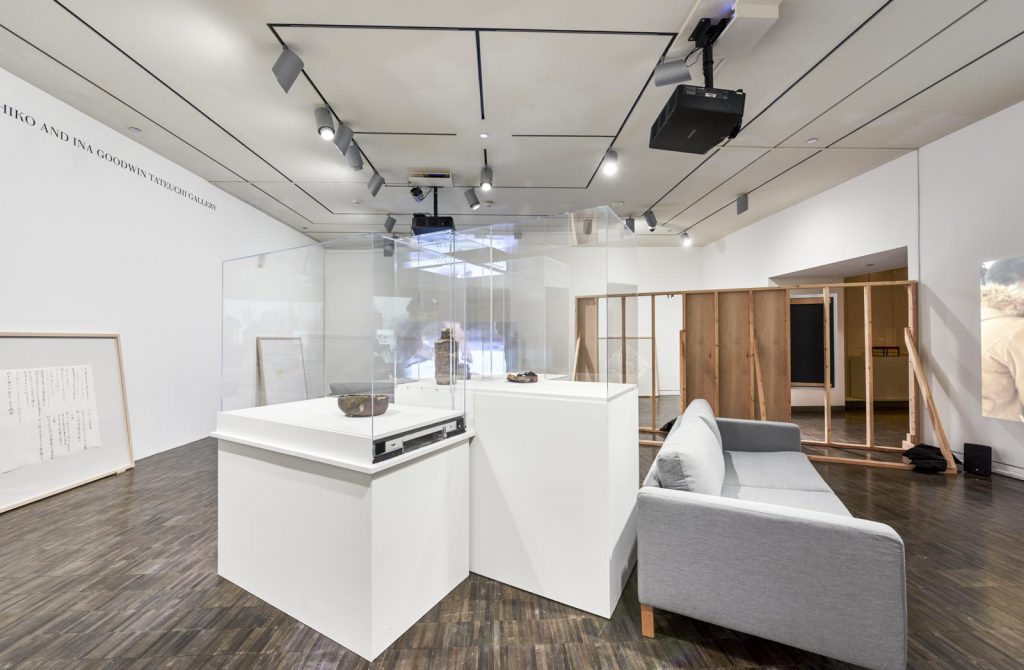
Koki Tanaka: Potters and Poets, Asian Art Museum, November 4, 2016 – February 14, 2017. Photo © Asian Art Museum
The moments Tanaka creates are profoundly meaningful, when we meet in them the infinity in kindness, in listening. Tanaka’s legacy would not be possible without his own genuine eagerness to meet the world with empathy, wherever he is, fully performed best in earlier works. In Showing objects to a dog (2010), he spends time in a park, showing random objects to a dog (Sheday) that he is taking care of for his friends who are out of town. We have a lasting sense of his character and hope—not only endearing but also comically charged by an unmet optimism, a desire to be fully in the world.
Tanaka’s work asks, in the present context, what are our methods for dire times? Despite this earnest struggle, art has been assimilated by capital—is that why these videos seem alive in a space dedicated to collecting and maintaining historical objects? Still, we should not resign ourselves to this conception of liberation—an ongoing lust for justice keeps asking how we can be valued for something beyond work.
